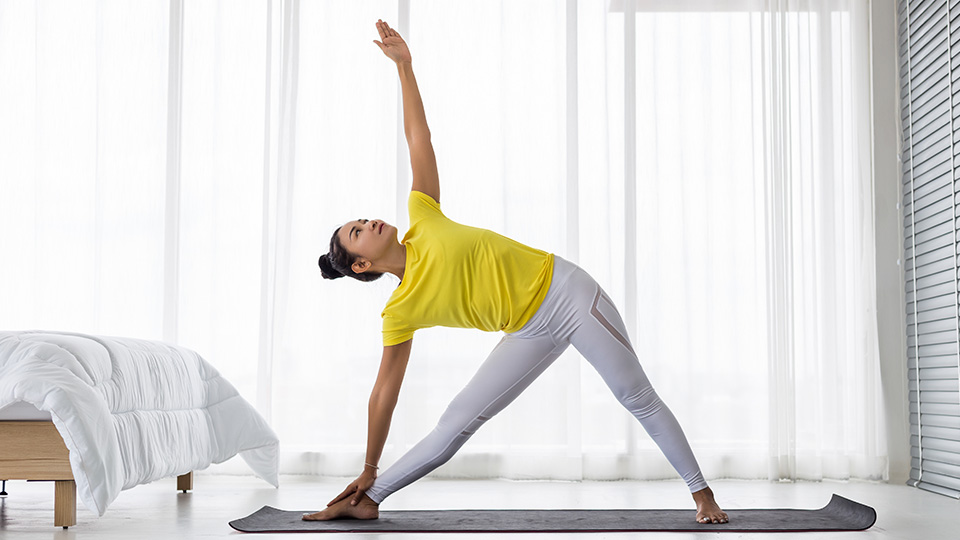For various reasons such as fitness, stress-relief, or physiotherapy, more people are embracing yoga for its physical and mental benefits today.
While yoga may seem like a low impact activity, experts warn that without proper execution of poses (or asanas), yoga practitioners can be vulnerable to injuries too. Often, these injuries develop over time, as a result of consistent incorrect practice of postures.
Overstretching of the joints, muscle and tendon strains are common yoga-related injuries, according to our Orthopaedic specialists.
As with any physical activity, the safest approach to yoga is to learn how to practise the asanas properly and to stay in tune with your body to avoid overdoing it.
“Listen to your body. Not everyone can do all the postures in yoga – stop if there is pain,” said Dr Lim Yeow Wai, Specialist, Raffles Orthopaedic Centre.
When practising yoga, these are specific areas to pay attention to.
Neck
Cause: Putting too much of your body weight on your neck when doing headstand, plough and shoulder stand. You can also injure your neck when you fling it too far back without support in certain yoga poses.
Prevention: Make neck safety a priority by being mindful of your body’s limits and only attempting poses of appropriate difficulty. The neck is one of the most delicate areas to injure, and it takes time to heal.
Shoulder
Cause: Incorrect body alignment in headstand and shoulder stand poses. Shrugging (raising the shoulders up toward the ears) compresses the shoulders and injure the muscles.
Prevention: Tight shoulders are often weak, so don’t attempt shoulder stands and headstands until your shoulders open up and are strengthened. Always keep the shoulders held back and down away from the ears, be careful not to pull too hard on the shoulders during stretches.
Wrist
Cause: Placing too much of your body weight on your wrists during poses where your hands are on the mat. Tender wrists from keyboard use and texting further aggravate this injury.
Prevention: Learn to properly bear weight on the correct parts of your hand: keep your wrists aligned to the front edge of your mat, and spread your fingers evenly with both your index finger and the heel of your hand pushing
Back
Cause: Rounding your spine when trying to go deep into your forward folds. When moving into a pose, rounding your back while keeping your legs straight can also injure your back.
Prevention: Before bending, imagine lengthening your spine up and away from your hips to avoid rounding your back, and focus on breathing into each pose. Aim for a straight back, don’t fold too deep and engage your abs to keep your core stabilised. Remember to keep your knees soft by bending them in poses like forward folds and down dog.
Knee
Cause: Lack of flexibility in your hips to execute deep knee-folding or hip-opening poses. Your knee can also twist out of alignment when doing pigeon pose, warrior poses or half-lotus.
Prevention: Work towards achieving hip flexibility – don’t strain and push beyond your limits. Do all the preparatory poses before moving into poses like half lotus and use props during pigeon to support the knee. Move slowly and deliberately until you are comfortable, and never lock your knees in standing forward bends. Keep your big toe aligned with your kneecap at all times.
Hamstring
Cause: Going too deep into your forward fold or moving into any pose with your legs straight. Straightening your legs and back – as well as quick, jerky movements – can pull your hamstring muscles.
Prevention: An easy way to prevent an injured hamstring is to keep your knees soft by bending them. When moving into a forward fold, don’t use your hands to push yourself deeper; pull back and breathe into the entire length of your hamstring to fully stretch it.
Practise Yoga Safely
Follow these tips to minimise your risk of injury
- If you have any existing injuries, speak with your doctor before starting your regime.
- Focus on the breathing.
- Find a trained and experienced yoga instructor.
- Be patient with yourself.
- Adapt poses to your individual needs and abilities.
- Do not compete or compare your progress with your friends or others.
(Source: Raffles Health)










